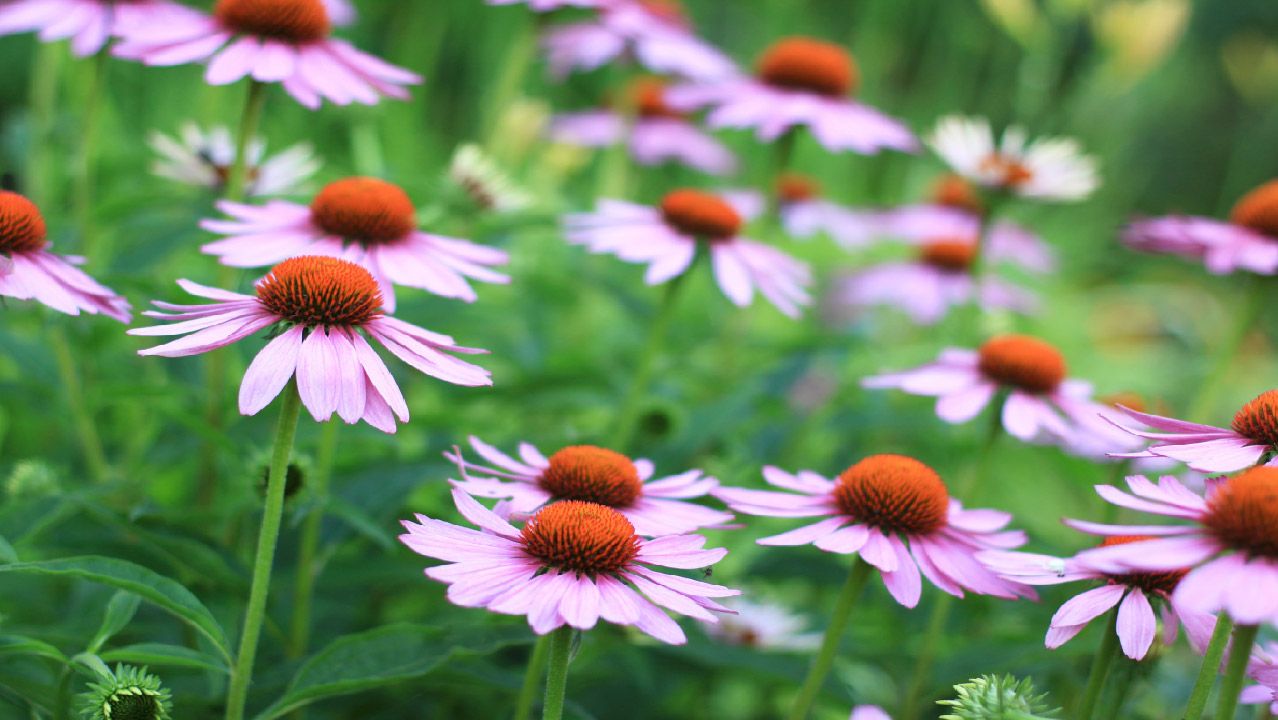The Best Drought Tolerant Perennials
May 31st 2023
Whether you're living on the West Coast of the United States or you're going through an especially hot and dry summer, one of the best ways to ensure your garden stays healthy and thriving is to plant drought tolerant perennials. Native plants in hot and dry areas often have built-in mechanisms for utilizing water most effectively during these times, but you don't necessarily need to limit yourself to the plants growing locally.
It's important to keep in mind that many of the drought tolerant perennials will do much better with consistent waterings for the first year or two before they can really thrive on their own without external inputs. Drip systems are an excellent backup to have in case of extended dry weather and sweltering temperatures. When choosing perennials, it is always a good idea to check the growing zone to ensure the temperatures don't kill them before they have time to shine. Here are some of the best drought tolerant perennials to put in your garden.
Herbaceous and Semi-Woody Plants
Herbaceous plants are those that do not have woody stems. These plants usually survive through the winter by dying back to the ground and regrowing again in the spring. Semi-woody plants aren't quite as woody as shrubs, and typically get woodier as they age. There are many excellent perennials that are very tolerant of extended periods with minimal amounts of water. Yarrow (Achillea varieties) can be used as a medicinal herb, comes in many color varieties and is very pest resistant. Russian sage (Perovskia atriplicifolia) offers purple blooms and fragrant, silvery foliage. Mojave sage (Salvia pachyphylla) produces bright, beautiful blooms and is native to the California hills.
Lavender (Lavandula angustifolia) is a plant well-known for its adaptation to the Mediterranean climate and it produces amazing scents and flower bouquets. Purple coneflower (Echinacea purpurea) offers beautiful flowers that attract butterflies and other pollinators. Artichoke (Cynara cardunculus) grows a delicious harvest or, if you leave the fruit on the plant, lovely purple flowers and is well adapted to its Mediterranean origins.
Shrubs
Shrubs are woody plants that are smaller than a tree and have many main stems arising from the ground. New Zealand Tea Tree (Leptospermum scoparium) produces aromatic leaves that are often used for medicinal purposes and showy flowers in the early summer. Wild Lilac (Ceanothus spp.) can live for 10 to 25 years and offers up sweet-smelling flowers every spring. Witch Hazel (Hamamelis virginiana) is another medicinal plant that boasts beautiful flowers and is relatively free from pests or disease. Chaste Tree (Vitex agnus-castus) is deer resistant and can grow several feet in a single growing season.
Trees
A tree is a woody perennial plant that usually grows to considerable height from one main stem. Aside from their beauty, trees can also offer shade and respite from the height in warm climates. Olive trees (Olea europaea) grow exceptionally well in their native Mediterranean climate. The Italian Cypress (Cupressus sempervirens) is another drought tolerant tree often used in long rows to line sidewalks and driveways. Canary Island date palms (Phoenix canariensis) are slow-growing but worthwhile investments to drought-proof your garden in the years to come. The Common Fig (Ficus carica) is another tree that offers delicious edible fruits as evidence of your care. Finally, Eucalyptus (Eucalyptus spp.) which originated in extremely hot environments, provides evergreen foliage, and can make delightful additions to flower arrangements.

